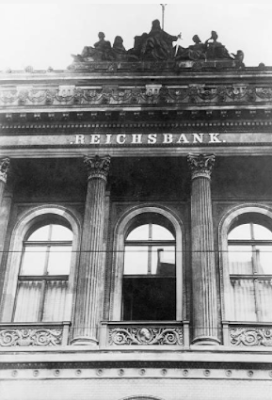In these circumstances it is easy to understand that the German books dealing with the history of the Inflation Period are for the greater part of little value. They are so full of prejudices, and are often so entirely lacking in the theoretical insight which must necessarily precede all historical description that they cannot even give an adequate picture of the great historical event. For this reason this work by a learned American is all the more welcome. In his Exchange, Prices and Production in Hyper-Inflation: Germany, 1920-1923, Professor F. D. Graham of Princetown University has taken great pains to provide a reliable narrative. . . .
In reading Professor Graham’s historical survey even those who were witnesses of the Inflation must again and again be amazed at the incredible incapacity evinced in regard to the monetary problem by all sections of the German nation. For the economist the most astonishing fact is the inadequacy of the Reichsbank’s discount policy. This is Professor Graham’s verdict: “From the early days of the war till the end of June 1922 the Reichsbank rate remained unchanged at 5 per cent; it was raised to 6 per cent in July, to 7 per cent in August, 8 per cent in September and 10 per cent in November 1922, to 12 per cent in January 1923, 18 per cent in April, 30 per cent in August and 90 per cent in September. But these increases were as nothing when measured alongside the progressive lightening in the burden of a loan during the time for which it ran. Though, after September 1923, a bank or private individual had to pay at the rate of 900 per cent per annum for a loan from the Reichsbank, this was no deterrent to borrowing. It would have been profitable to pay a so-called interest, in reality an insurance, charge, of thousands or even millions of per cents per annum, since the money in which the loan would be repaid was depreciating at a speed which would have left even rates like these far in the rear. With a 900 per cent interest rate in September 1923 the Reichsbank was practically giving money away and the same is true of the lower rates in the preceding months when the course of depreciation was not quite so headlong.
—Ludwig von Mises, “The Great German Inflation,” Economica, no. 36 (May 1932): 230-231.

No comments:
Post a Comment